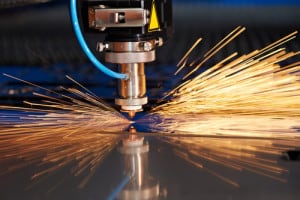
The ability to optimize production and predict equipment failure can drastically increase operating profit in factories. Here’s how one auto parts manufacturer did it.
Name of Organization: Hirotec America
Industry: Manufacturing
Location: Auburn Hills, MI USA
Business Opportunity or Challenge Encountered:
Operational downtime has been a challenge for manufacturers since the first factories were built centuries ago. Until this recent era, downtime meant delays in getting product out the door and some frustrated customers, with some lost sales. Now, with interconnected global supply chains and fierce competition, downtime can be devastatingly costly.
Many original equipment manufacturers (OEMs) still run machinery without condition-based monitoring—essentially operating until a failure occurs. Then, appropriate personnel are contacted to assess the situation and make the repairs as quickly as possible. Complicating events such as weather or traffic patterns also contribute uncertainty to the mix.
Hirotec America, a global supplier of auto parts, sought to eliminate this trend of reactive maintenance by using the information and systems it had on hand to gain deeper insight into its operations and processes. As explored in a recent case study, the automotive supplier had long collected industrial data from sensors and machines across customer production facilities, as well as systems to support its decisions and track business progress.
However, volumes of this data were manually separated and stored across multiple sources—making it inaccessible to collective and systematic analysis. Hirotec needed to automate the collection and analysis of this data to make it available to decision-makers as events happen – or, ideally, before they happen.
“A lack of data was never an issue for us,” according to Justin Hester, senior researcher at Hirotec, quoted in the case study. “As one of the largest automotive manufacturing suppliers in the world, we collect volumes of datasets on a daily basis. The problem we were faced with was transitioning from a data-heavy organization to a data-smart organization. We realized that in order to bolster profits from untapped machine-generated information, we needed to look towards modern solutions that automated the process and enabled timely, data-driven decisions.”
How This Business Opportunity or Challenge Was Met:
To address this need for real-time data from across the entire enterprise and beyond, Hirotec worked to develop a competitive strategy to capitalize on the Internet of Things (IoT). The company deployed Kepware’s KEPServerEX and the ThingWorx IoT Platform — both solutions from PTC — to enable company-wide device-to-cloud connectivity through one overarching toolset. Working together to deploy a single source of smart solutions for the IoT, the ThingWorx platform would be able to provide analytical insight into Hirotec’s data through industrial data streamed from the IoT Gateway for KEPServerEX, a plug-in that pushes information into big data and analytic software applications.
Hirotec’s North American shop in Detroit, Michigan was the testbed for the first small sprint in building the capability, because of the unique data types generated among its eight computer numerical control (CNC) machines. The system was configured to collect data from the CNC machines and streams it in real-time to the cloud, where the platform provides analytics and data visualizations. This solution gives Hirotec managers access to a customized visualization of both the operations and conditions of its industrial devices and systems.
Measurable/Quantifiable and “Soft” Benefits from This Initiative
The IoT implementation enabled Hirotec to gain increased visibility into the processes of its CNC shop and deeper insight into operations. One immediate benefit is manufacturing optimization. As noted in the case study, the company recognized that having access to CNC machine uptime data significantly impacted the shop’s scheduling process, which previously only was able to be performed with after-the-fact analysis. Managers can now leverage real-time data from the shop floor and tie it to the scheduling ERP system, optimizing the scheduling of parts to CNC modules.
This process also provides greater insight into asset and resource allocation by automatically formulating smarter questions about current needs and priorities and determining the most effective course of action. Because of this, Hirotec reports it has improved productivity across the shop and increased its return on investment. The company plans to use this insight to create an IoT-ready production line and enable remote equipment monitoring and management from a centralized dashboard to promote predictive and proactive maintenance.
Hirotec’s IoT efforts are impacting every aspect of its business—from operations and IT to financial forecasting, customer relations, and sales. The company’s decision-makers will continue to explore the varied sets of contextualized data being generated, and use it to create common business processes and analyses.
(Source: Kepware Technologies, a PTC business)





























